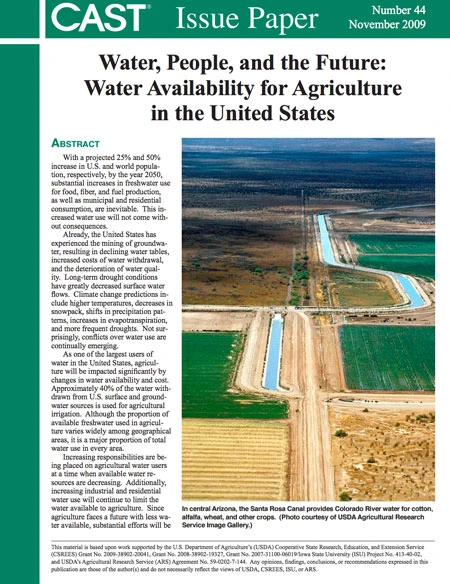
With a projected 25% and 50% increase in U.S. and world population, respectively, by the year 2050, substantial increases in freshwater use for food, fiber, and fuel production, as well as municipal and residential consumption, are inevitable. This increased water use will not come without consequences.
It is important to the economic vitality of the United States—including agriculture—that policymakers, water managers, and water users work collaboratively to achieve sustainable water resource management. Multiple issues require attention—water quality, environmental water needs, municipal demands for water, water resource availability, agricultural water use—and no issue can be addressed individually. This paper discusses the diverse demands for water resources—past, current, and future—using the impacts, regulations, challenges, and policies of specific U.S. states as examples. The authors indicate that the reliability of water quantity and quality deserves the attention of all levels of government and that private and public sector leadership will be critical.

